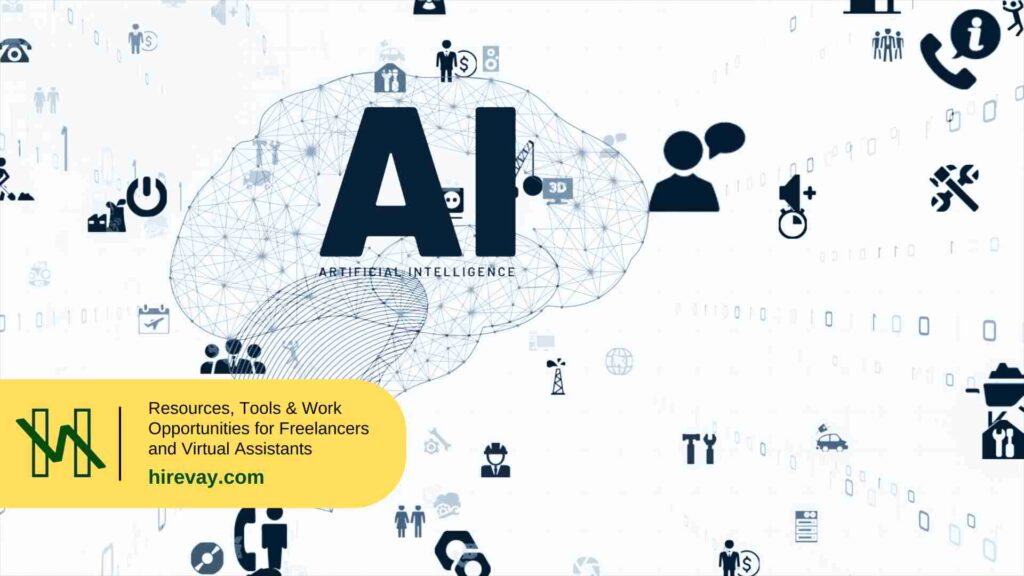Table of Contents

Introduction to Modern Virtual Assistant Tools
Overview of the Evolving Role of Virtual Assistants in 2025
As we move into 2025, virtual assistants (VAs) are becoming more integral to the daily operations of businesses globally. No longer confined to basic administrative tasks, VAs now tackle complex and dynamic responsibilities that require advanced technical skills and a deep understanding of customer service tools. Empowered by cutting-edge technology, they handle everything from customer support to data analysis, ensuring seamless operations and enhanced customer experiences.
The modern VA must be adaptable, proficient in various tools, and able to seamlessly transition between roles. This evolution reflects the broader trend of digital transformation, where efficiency and advanced technology are at the forefront of organizational success.
Importance of Staying Current with Customer Service Technology
To remain competitive, you must stay updated with the latest advancements in customer service technology. This could mean the difference between providing exceptional service or falling behind. Here are some key reasons to stay current:
- Enhanced Customer Experience: By leveraging modern tools, you can offer personalized and responsive service that meets customer expectations.
- Operational Efficiency: Advanced tools help streamline workflows and reduce manual work, allowing you to focus on more strategic tasks.
- Competitive Advantage: Staying ahead with the latest tech trends positions your business as an innovative leader, attracting more customers.
Impact of AI and Automation on Virtual Assistant Responsibilities
Artificial Intelligence (AI) and automation are transforming the landscape of virtual assistance. These technologies not only enhance productivity but also redefine roles and responsibilities. Here’s how:
- Automated Processes: Routine tasks such as data entry, scheduling, and basic inquiries can be automated, freeing up your time for more complex engagements.
- Intelligent Insights: AI-driven tools provide predictive analytics, helping you anticipate customer needs and improve service delivery.
- Enhanced Communication: Chatbots and virtual agents powered by machine learning can handle a significant portion of customer interactions, ensuring timely and accurate responses.
This AI-driven evolution requires you to develop new skills and become proficient in managing and leveraging these technologies. Being proactive in embracing these tools not only makes your job easier but also enhances the value you bring to your organization.
As virtual assistants continue to evolve, it is vital to understand and integrate advanced communication and collaboration platforms. This knowledge ensures that you can work effectively, no matter where your team is based.

Communication and Collaboration Platforms
Effective communication and collaboration lie at the heart of successful virtual assistant responsibilities. The digital age has ushered in advanced tools that enable virtual assistants to perform with high efficiency and coherence. Let’s delve into key aspects of these platforms that shape the modern virtual workplace landscape.
Advanced Video Conferencing and Virtual Meeting Tools
Video conferencing and virtual meeting tools have revolutionized the way virtual assistants connect with clients and teams. These tools provide high-quality, real-time interaction that was once only possible through in-person meetings. Key features of advanced video conferencing platforms include:
- High-definition video and audio: Ensures clear communication without misinterpretations caused by poor quality.
- Screen sharing and live annotations: Facilitates real-time collaboration on documents and presentations, streamlining workflow.
- Virtual backgrounds and noise cancellation: Enhances professionalism by minimizing distractions, making remote work seamless.
- Integration with calendars and scheduling tools: Simplifies the scheduling of meetings and ensures that all participants are kept in the loop.
Platforms like Zoom, Microsoft Teams, and Google Meet are industry leaders, each offering robust features that enhance virtual assistant effectiveness.
Real-time Messaging and Team Collaboration Software
Effective team communication relies heavily on real-time messaging software. These tools enable virtual assistants to stay connected, ensuring quick resolution of queries and tasks. Some primary features are:
- Instant messaging: For quick, informal communication that keeps everyone updated.
- Group chats and channels: Organizes discussions by project or department, reducing clutter and enhancing focus.
- File sharing and document collaboration: Allows team members to share and collaborate on documents directly within the chat interface.
- Integration with other tools: Enhances productivity by integrating with calendars, project management systems, and cloud storage.
Well-known platforms such as Slack, Microsoft Teams, and WhatsApp Business lead the charge, offering versatile features that support dynamic business environments.
Cloud-based Project Management Systems
Staying organized and managing workflows efficiently is paramount for virtual assistants. Cloud-based project management systems provide the structure and visibility needed to keep projects on track. Key elements include:
- Task assignment and tracking: Visualizes project timelines and monitors task progress, ensuring deadlines are met.
- Collaboration on tasks and projects: Encourages teamwork with shared boards, lists, and timelines.
- Progress reporting and analytics: Provides insights into project advancement and bottlenecks, enabling timely interventions.
- Document storage and sharing: Centralizes access to relevant files, fostering efficient collaboration.
Popular systems like Trello, Asana, and Monday.com are invaluable for virtual assistants, enabling them to juggle multiple projects simultaneously with precision.
These advanced communication and collaboration tools empower virtual assistants to perform their roles more effectively, fostering a seamless and productive work environment. Staying adept in these technologies is essential for ensuring continuous improvement in customer service roles, laying the groundwork for building strong and efficient virtual teams.

AI-Powered Customer Support Tools
To effectively manage and enhance customer interactions, virtual assistants in 2025 leverage a variety of AI-powered tools. These tools not only improve efficiency but also enhance the customer experience. Let’s dive into the main components of these advanced systems.
Machine Learning-Based Chatbot Integration
Chatbots, driven by machine learning algorithms, have become indispensable in customer support. They can handle numerous tasks, from answering frequently asked questions to guiding customers through complex processes. These AI-driven bots learn and improve over time, providing more accurate and helpful responses.
Key benefits of chatbot integration include:
- 24/7 availability: Chatbots ensure that customer inquiries are addressed at any time, improving overall customer satisfaction.
- Consistent responses: Customers receive uniform answers, reducing confusion and enhancing service reliability.
- Scalability: Chatbots can manage multiple interactions simultaneously without degradation in performance.
Predictive Analytics for Customer Behavior
Predictive analytics, powered by AI, helps virtual assistants anticipate customer needs and behaviors. By analyzing historical data and identifying patterns, these tools can predict future actions and preferences. This insight enables proactive customer service.
Benefits of predictive analytics:
- Personalized experiences: Tailoring interactions based on predictive insights improves customer engagement and loyalty.
- Proactive solutions: Identifying potential issues before they arise allows for preemptive action, leading to smoother customer experiences.
- Enhanced decision-making: Data-driven predictions help virtual assistants make informed decisions quickly and accurately.
Automated Ticket Routing and Resolution Systems
Automated systems streamline the process of managing customer support tickets. AI tools can categorize, prioritize, and route tickets to the appropriate personnel based on the issue’s nature and severity. They also support automated resolution processes by suggesting solutions or guiding customers through troubleshooting steps.
Key features of automated ticket systems include:
- Efficient routing: Ensures tickets are directed to agents best equipped to handle them, speeding up resolution times.
- Prioritization: High-priority issues are flagged and addressed promptly, ensuring critical problems are resolved quickly.
- Self-service options: Automated systems can guide customers through steps to resolve issues independently, reducing the workload on support teams.
These advanced AI-powered tools empower virtual assistants to deliver exceptional customer service effectively and efficiently. As you integrate these technologies, remember that the goal is to enhance the customer experience and streamline your workflow.
With AI at the core of customer support tools, virtual assistants are better equipped than ever to provide top-notch service. As technology continues to evolve, embracing these innovations will keep you at the forefront of customer service excellence.

Customer Relationship Management (CRM) Systems
As a virtual assistant in 2025, mastering Customer Relationship Management (CRM) systems is crucial for delivering exceptional customer service. CRMs have evolved, incorporating AI capabilities, advanced analytics, and omnichannel support to enhance your efficiency and customer interactions.
Advanced CRM Platforms with AI Capabilities
Today’s CRM platforms, including Salesforce and HubSpot, are powered by artificial intelligence (AI). These tools automate repetitive tasks, enabling you to concentrate on building meaningful customer relationships. AI in CRMs allows for:
- Personalized Customer Interactions: AI analyzes customer data and preferences to tailor personalized communication, resulting in higher engagement and satisfaction.
- Predictive Sales and Support: Machine learning algorithms predict customer needs and sales trends, guiding your interactions and strategy.
- Automation of Routine Tasks: Automating mundane tasks, such as data entry and follow-ups, frees up your time for higher-value activities.
Customer Data Analytics and Reporting Tools
The insights derived from customer data are invaluable for making informed decisions. Modern CRMs offer sophisticated analytics and reporting tools, such as:
- Real-Time Data Analysis: Access to real-time data lets you monitor and adjust customer strategies promptly.
- Comprehensive Reports: Generate detailed reports on customer behavior, sales performance, and support metrics to identify trends and opportunities.
- Actionable Insights: Translate data into actionable insights to optimize customer experiences and drive business success.
Integrated Omnichannel Support Features
Seamless customer service across multiple channels is now a standard expectation. CRMs need to integrate omnichannel support features, enhancing your ability to provide exceptional service. These features enable:
- Unified Communication Channels: Integrate email, social media, live chat, and voice calls into a single platform for a cohesive view of customer interactions.
- Consistent Customer Experience: With integrated support, customers receive consistent and personalized service regardless of the channel they use.
- Efficient Issue Resolution: Quickly access the customer’s history across all channels, ensuring timely and accurate issue resolution.
Mastering CRM systems equipped with these advanced tools empowers you to deliver high-quality, efficient customer service. Stay updated with emerging technologies, and you’ll continue to excel in your role as a virtual assistant.

Knowledge Management and Documentation
Keeping up with dynamic knowledge bases, automated documentation tools, and real-time information update capabilities is crucial for virtual assistants in 2025. Let’s dive into each of these tools and see how they can help you thrive in the modern virtual workspace.
Dynamic Knowledge Base Systems
A dynamic knowledge base system is fundamental for organizing and accessing information quickly and efficiently. These systems are designed to be user-friendly and adaptable, ensuring that the most relevant data is always at your fingertips. Features to look for include:
- Interactive Guides and Tutorials: These can help users and assistants alike find solutions to common problems effortlessly.
- Intelligent Search Functions: Advanced search algorithms that leverage AI to provide the most accurate and relevant results.
- Customizable Templates: These allow for quick setup and consistent documentation practices.
By employing dynamic knowledge bases, you can ensure that all information is current and easily accessible, making your work more efficient and your support more effective.
Automated Documentation Tools
Automated documentation tools are game-changers for virtual assistants. These tools leverage AI to create, update, and maintain documentation without requiring constant manual intervention. Here are some key benefits:
- Time Efficiency: Automated tools save hours of manual work, allowing you to focus on more complex tasks.
- Accuracy: Reduce the risk of human error and ensure consistency across all documents.
- Scalability: Easily handle large volumes of documentation, which is vital for growing businesses.
By integrating automated documentation tools into your workflow, you can enhance productivity and ensure that all documentation is accurate and up-to-date.
Real-Time Information Updating Capabilities
The ability to update information in real-time is critical in a fast-paced virtual environment. Real-time update capabilities ensure that all team members have access to the most current data, enhancing collaboration and decision-making. Key features include:
- Instant Synchronization: Changes are reflected immediately across all platforms and devices.
- Alerts and Notifications: Stay informed whenever there is a significant update to key documents or knowledge bases.
- Version Control: Track changes and maintain a clear history of document revisions.
Utilizing real-time information updating tools allows you to keep everyone in the loop and make informed decisions quickly and accurately.
With these tools in place, you can maintain an organized, efficient, and up-to-date knowledge management and documentation system. Keeping your virtual assistant toolkit sharp ensures smooth operation and a high level of support for your team and customers. Next, we will look at another essential component of a virtual assistant’s toolkit.

Time Management and Productivity Tools
Keeping up with the fast-paced demands of the 2025 workspace requires effective time management and productivity tools. Utilize cutting-edge solutions to streamline tasks, optimize schedules, and enhance overall productivity. Here, we explore key tools that can empower you to manage time efficiently and boost productivity.
AI-powered Scheduling and Calendar Management
AI-powered scheduling tools have significantly evolved. These tools leverage artificial intelligence to automate the scheduling process, making it seamless and effortless. Once you input your availability, AI algorithms suggest the best meeting times, considering preferences and avoiding scheduling conflicts.
Key features include:
- Automated meeting scheduling: Sync calendars and automatically set up meetings.
- Smart reminders: Notify you of upcoming events and deadlines.
- Integration with project management tools: Ensure your scheduled tasks align with project timelines.
Popular tools such as Clara, Zoom.ai, and X.ai provide these features, allowing you to focus on other essential tasks while they handle scheduling autonomously.
Task Automation and Workflow Optimization Tools
Task automation tools are pivotal in optimizing workflows. By automating repetitive and time-consuming tasks, you can significantly enhance productivity and reduce human errors. These tools enable you to streamline workflows, ensuring more efficient task execution.
Key features include:
- Automated task execution: Set up automated workflows for routine tasks.
- Customizable templates: Create specific templates tailored to your needs.
- Seamless integrations: Connect with other tools like CRM (Customer Relationship Management) systems and project management platforms.
Tools like Zapier, IFTTT (If This Then That), and Microsoft Power Automate are excellent choices for automating tasks and optimizing workflows, effectively freeing up time for more strategic activities.
Time Tracking and Productivity Analytics
Tracking how you spend your time helps in identifying productivity patterns and areas needing improvement. Advanced time tracking tools can monitor your work habits, providing insights and analytics to enhance performance and productivity.
Key features include:
- Real-time tracking: Monitor time spent on tasks in real-time.
- Productivity analytics: Gain insights into work patterns and productivity levels.
- Customized reporting: Generate detailed reports to analyze time usage.
Toggl, RescueTime, and Harvest offer robust time tracking and analytics capabilities, enabling you to track your work, set productivity goals, and make data-driven decisions to enhance efficiency.
By leveraging these advanced tools, you can stay on top of your tasks, optimize your workday, and boost overall productivity. Enhancing your time management and productivity strategies ensures you keep up with the demands of the modern virtual workspace, effectively managing your responsibilities and delivering excellent performance.

Security and Privacy Tools
As a virtual assistant, ensuring data security and privacy is crucial for protecting sensitive information. In 2025, the landscape of cybersecurity is more complex, requiring advanced tools and protocols to safeguard data. Here’s a guide to essential security and privacy tools every virtual assistant should employ:
Advanced Encryption and Data Protection Systems
Data breaches can have disastrous consequences. To mitigate this, encryption is your first line of defense. Encryption tools encode your data, making it unreadable to unauthorized users. Essential features include:
- Robust Encryption Protocols: AES-256 is a gold standard encryption method, providing a high level of security.
- End-to-End Encryption (E2EE): Data is encrypted on the sender’s end and can only be decrypted by the recipient. Tools like Signal and WhatsApp employ E2EE for secure communications.
By implementing robust encryption, you ensure that sensitive data—whether you’re handling financial records, personal information, or business documents—remains secure from breaches.
Compliance Monitoring and Management Tools
Staying compliant with regulations such as GDPR (General Data Protection Regulation) or CCPA (California Consumer Privacy Act) is not just about avoiding fines but also about maintaining customer trust. Compliance tools help you manage these requirements efficiently. Look for tools that offer:
- Automated Compliance Checks: These tools automatically monitor your processes to ensure ongoing compliance without manual intervention.
- Reporting: Generate compliance reports for audits effortlessly.
Platforms like TrustArc or OneTrust are excellent for making compliance management seamless and stress-free, providing dashboards and real-time alerts to keep you on track.
Secure Remote Access Solutions
Virtual assistants often work remotely, accessing client systems and data from various locations. Secure remote access tools protect the integrity of these connections. Key aspects include:
- Virtual Private Networks (VPNs): VPNs like NordVPN or ExpressVPN provide secure connections by encrypting your internet traffic.
- Multi-Factor Authentication (MFA): Adding an extra layer of security beyond just passwords. Apps like Google Authenticator or Duo Security can significantly reduce the risk of unauthorized access.
Implementing these tools ensures that you can work from anywhere without compromising the security of the client’s data.
By integrating advanced encryption and data protection systems, ensuring compliance through effective monitoring tools, and securing remote access, you can significantly enhance your security framework. This proactive approach not only protects sensitive information but also builds trust with your clients, establishing you as a reliable and competent virtual assistant in 2025.

Performance Monitoring and Analytics
Real-Time Performance Tracking Dashboards
Staying on top of performance metrics in real-time is crucial for virtual assistants. Real-time performance tracking dashboards bring all your key performance indicators (KPIs) into one visual interface. By harnessing tools like Google Analytics or Tableau, you can monitor workflows, identify bottlenecks, and make informed decisions quickly.
These dashboards are designed to provide a comprehensive view of your operations. You’ll see metrics like response times, customer interaction volumes, and task completion rates all in one place. This visualization aids in maintaining optimal efficiency and ensuring that all team members are meeting their targets. You can customize these dashboards according to specific needs, ensuring that the most relevant data is always at your fingertips.
Customer Satisfaction Measurement Tools
Understanding customer sentiment is paramount in delivering superior service. Customer satisfaction measurement tools, such as Net Promoter Score (NPS) surveys and Customer Satisfaction (CSAT) scores, help you gather customer feedback in an actionable format.
These tools often integrate directly into your customer relationship management (CRM) systems, allowing you to link customer feedback with specific interactions. This integrated approach helps in identifying trends and pinpointing areas for improvement. Utilizing automated feedback collection, alongside immediate data analysis, ensures you are always aware of customer satisfaction levels, enabling rapid response to any concerns.
Predictive Performance Analytics
Looking ahead is just as important as staying informed about current performance. Predictive performance analytics use historical data to forecast future trends and performance outcomes. Leveraging these tools enables virtual assistants to anticipate potential issues before they arise and prepare for future demands.
Machine learning and AI algorithms analyze patterns in your data, predicting customer behavior, support needs, and areas of potential growth or improvement. By adopting predictive analytics, virtual assistants can allocate resources more effectively, optimize staffing levels, and adapt strategies proactively to maintain high standards of service.
To ensure continuous growth and adaptability, it’s essential to stay updated with the latest customer service technologies. Real-time tracking, satisfaction measurement, and predictive analytics form a trifecta of powerful tools that, when used in tandem, can significantly enhance your effectiveness and customer satisfaction.

Future-Proofing Your Virtual Assistant Toolkit
As the digital landscape evolves, keeping your virtual assistant toolkit current will ensure you stay ahead. Emerging technologies, continuous learning, and adaptability play a significant role in future-proofing your skills. 💡
Emerging Technologies and Trends in Customer Service
Staying informed about the latest technological advancements is crucial. Here are some cutting-edge trends reshaping customer service:
- Artificial Intelligence (AI): Transform customer interactions with AI chatbots, speech recognition, and sentiment analysis.
- Augmented Reality (AR): Provide immersive and interactive customer experiences with AR, enhancing product demonstrations and support.
- Blockchain: Strengthen security and transparency in transactions and customer data management.
- 5G Connectivity: Leverage faster internet speeds for improved communication and real-time support solutions.
- Voice Assistance: Utilize smart voice assistants like Alexa and Google Assistant to streamline customer queries and support. 🚀
Continuous Learning and Skill Development Resources
To keep up with rapid technological advancements, continuous learning is imperative:
- Online Courses: Platforms like Coursera, Udemy, and LinkedIn Learning offer courses on AI, AR, blockchain, and more.
- Webinars and Workshops: Attend industry-specific webinars to gain insights into emerging trends and practical applications.
- Certifications: Consider certifications like AI for Everyone by Andrew Ng or Certified Blockchain Professional to validate your skills.
- Communities and Forums: Join communities such as Reddit or Stack Overflow to exchange knowledge with peers and experts. 🌐
Adaptability and Scalability Considerations
Adaptability is key to thriving in an ever-changing environment. Ensuring your toolkit is both adaptable and scalable will help you meet evolving demands:
- Customization: Choose tools that offer customization to meet specific needs and preferences.
- Integration: Ensure seamless integration of various tools to create a unified workflow.
- Scalability: Opt for tools that can scale alongside your growing workload and business needs.
- Flexibility: Be open to adopting new tools and approaches that enhance your productivity and customer service capabilities. 🛠️
By embracing emerging technologies, committing to continuous learning, and prioritizing adaptability, you’ll be well-equipped to handle the dynamic demands of the virtual assistant role. This proactive approach sets the stage for success.
Related Posts
Enhance Administrative Efficiency with These Cutting-Edge Tools and Software
In any business, administrative tasks are vital but can often become time-consuming and cumbersome. As…
Read Post »
Distraction Blocking Tools: Supercharge Your Focus
In the digital age, distractions are everywhere—from the constant ping of notifications to the endless…
Read Post »
Mastering Ideas: The Best Mind Mapping Tools for Visual Thinking
Do you ever find yourself overwhelmed by scattered ideas, trying to organize them into something…
Read Post »